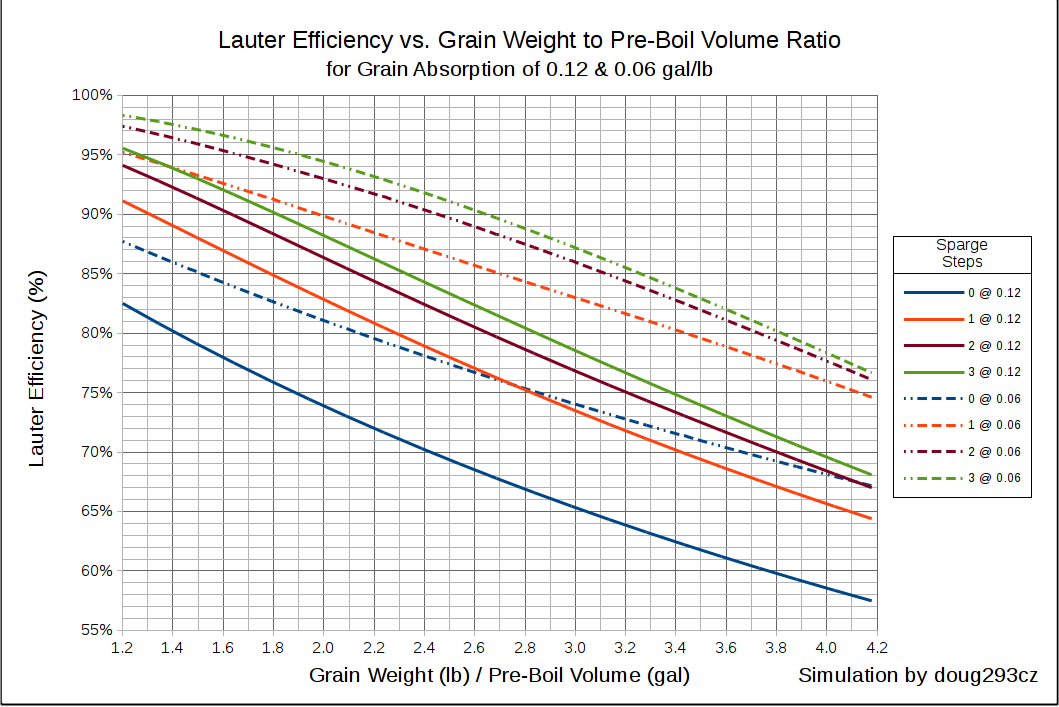Ok I know theres a ton of information out there on this topic. I've read the Brülosophy xBmt and listened to the podcast, but I wanted to hear what experiences you guys have had with this.
My thoughts are that I want as simple and repeatable a process as possible to reduce brew day times and room for error. Also as little clean up as possible. I know you can mess around with BIAB and squeeze the bag or do a "dunk" or "pour over" sparge as I've seen a few mention on here, but I don't really wanna mess with that because it seems messy and unpredictable. I'm talking about a simple, one step, full volume mash in a cooler. I know the main concern is a hit to efficiency, but I'm wondering how significant it would really be. Also, with calculators such as beersmith, couldn't you pretty easily just up your grain bill to make up for the losses?
There are a couple other benefits I can think of for the no sparge technique, one being that from a thermodynamic standpoint, the bulk capacity of the larger amount of water in the mash would actually hold temperature better. Also, I think Palmer is quoted saying that sparging can extract unwanted tannins.
Thoughts on all of this??
My thoughts are that I want as simple and repeatable a process as possible to reduce brew day times and room for error. Also as little clean up as possible. I know you can mess around with BIAB and squeeze the bag or do a "dunk" or "pour over" sparge as I've seen a few mention on here, but I don't really wanna mess with that because it seems messy and unpredictable. I'm talking about a simple, one step, full volume mash in a cooler. I know the main concern is a hit to efficiency, but I'm wondering how significant it would really be. Also, with calculators such as beersmith, couldn't you pretty easily just up your grain bill to make up for the losses?
There are a couple other benefits I can think of for the no sparge technique, one being that from a thermodynamic standpoint, the bulk capacity of the larger amount of water in the mash would actually hold temperature better. Also, I think Palmer is quoted saying that sparging can extract unwanted tannins.
Thoughts on all of this??




